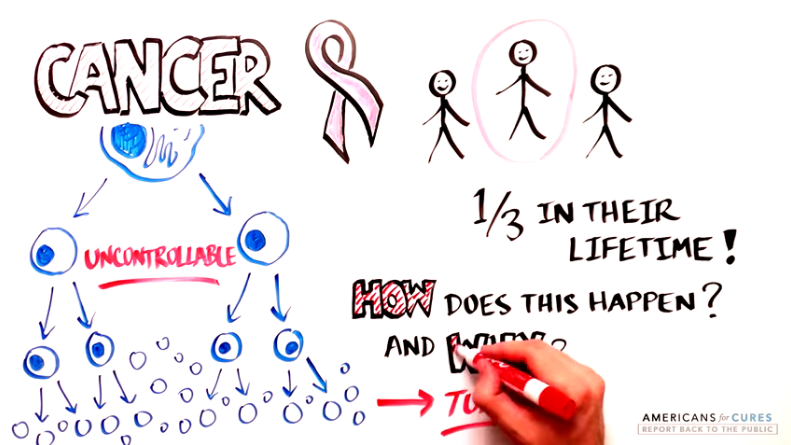Solid Tumors
About
- Solid tumors are abnormal clumps of cells that can grow in several places of the body, including bones, muscles, and other organs such as the brain, breast, ovary, colon, etc.
- Solid tumors are thought to arise predominantly from cancer stem cells (slowly dividing cells) as opposed to the fast-dividing tumor cells. Cancer stem cells are less likely to be destroyed by chemotherapies (which are more effective in targeting fast-dividing tumor cells), thus contributing to cancer recurrence.
How Stem Cells Can be Used to Study and Treat Solid Tumors
- Cancer stem cells can be generated and characterized from stem cells. Appropriate drugs to identify and eliminate the cancer stem cells can then be developed.
- Stem cell-derived immune cell populations can be generated to identify and eliminate cancer cells.
CIRM’s Progress: Selected Research Highlights
CIRM has funded 10 solid-tumor clinical trials across six institutions in California. Some examples include:
- In a Phase 1b/2 clinical trial, Stanford researchers, in collaboration with the company, FortySeven, have identified a “don’t eat me” protein on the surface of cancer stem cells that protects them from being destroyed by the body’s immune system. By making an antibody to block this protein, cancer stem cells cannot hide from the immune system. This antibody is being tested in a variety of cancers including, colon, ovary, and bladder and urinary cancer and results suggest it is well-tolerated.
- In a Phase 1 clinical trial, UCLA researchers are testing the safety of a potential drug to kill cancer stem cells in the ovary, colon, and brain. This drug (PLK4 Inhibitor) can block a protein that is important for regulating cell growth, division and death, thereby controlling the cancer.
Blood Cancers
About
- Blood cancers often start in the bone marrow, where blood is produced. Abnormal blood cells will grow uncontrollably and interrupt the function of normal blood cells.
- Blood cancers can be divided into three main types: Leukemia, lymphoma and myeloma.
- Leukemia
- A form of blood cancer that starts in the blood and bone marrow. Stem cells in the bone marrow normally form all blood cells: red blood cells, platelets and immune cells. In leukemia, the bone marrow stem cells create abnormal immune cells, eventually leaving no room for normal cells.
- Recent research has shown that people with leukemia also have a small population of leukemia stem cells. These cells are smart and escape treatments targeting leukemia cells and cause relapse.
- Lymphoma
- Non-Hodgkin lymphoma: A form of blood cancer that typically develops in the lymphatic system from a population of white blood cells (lymphocytes) that helps the body fight infections.
- Hodgkin lymphoma: A form of blood cancer that typically develops in the lymphatic system. This type of lymphoma is one of the most curable forms of cancer.
- Multiple myeloma
- A form of blood cancer that begins in the blood’s plasma cells, which make antibodies to fight infections. The presence of these cancer cells results in healthy cells to be “crowded out”.
- Leukemia
How Stem Cells Can be Used to Study and Treat Blood Cancers
- Cancer stem cells can be studied in the laboratory and appropriate drugs to identify and eliminate these cells can be developed.
CIRM’s Progress: Selected Research Highlights
- CIRM has funded 11 clinical trials in blood cancer research across nine California institutions. Some examples include:
- In Phase 1 and Phase 1/2 clinical trials, Stanford researchers, in collaboration with multiple other institutions and industry partners — nationally and internationally— have used the “don’t eat me” antibody (anti CD-47) to target a variety of blood cancers. Results have been robust and promising for at least 2 forms of cancer, showing ~70%-100% response (either partial or complete remission) in patients.
- In a Phase 1b/2a clinical trial, UCSD researchers are testing an antibody, cirmtuzumab, to treat a blood cancer, Chronic Lymphocytic Leukemia (CLL). The antibody recognizes and attaches to a protein on the surface of cancer stem cells. This attachment makes the cancer cells more vulnerable to anti-cancer drugs. Cirmtuzumab has received orphan drug designation for treatment of CLL.
- CIRM has also funded the critical early stage research of two blood cancer therapies that led to FDA approvals:
- Fedratinib was approved by the FDA in August 2019 as a first line therapy for myelofibrosis (scarring of the bone marrow) that can occur as a primary disease or as a consequence of polycythemia vera (PV) or essential thrombocythemia (ET). As MF progresses, it predisposes patients to bone marrow failure and acute myeloid leukemia (AML). By providing early support to Catriona Jamieson, the Principal Investigator behind this therapy, CIRM enabled the pre-clinical studies to advance and the drug was ultimately tested in clinical trials by a number of industry partners.
- Glasdegib was approved by the FDA in November 2018 as a combination therapy for AML patients over the age of 75. It is a hedgehog inhibitor. Again, CIRM supported the early research stages of this therapy which enabled its subsequent progression to clinical trials and ultimately, market dissemination.
Cancer Organizations Endorsing YES on Prop 14
To see the full list of over 80 patient advocate organizations that endorse YES on Prop 14
please click hereGLIOBLASTOMA
Glioblastoma is an aggressive type of brain tumor known as a glioma. Gliomas are primary tumors that arise within the brain itself, rather than metastasizing to the brain from another cancer site elsewhere in the body. These tumors—gliomas—form when glial cells, a gluey type of support cell within the brain, begin to divide quickly and uncontrollably within the brain.
RETINITIS PIGMENTOSA
Leukemia, a cancer of the blood cells, begins in the bone marrow—the body’s blood cell factory. It causes the stem cells in the bone marrow, that usually develop into normal white blood cells (the body’s defense system against infection), to instead make abnormal immune cells that can’t fight infections. Eventually, these abnormal immune cells crowd out the normal blood cells. Without a sufficient population of functional white blood cells, leukemia patients develop anemia, bleeding, and infections.




